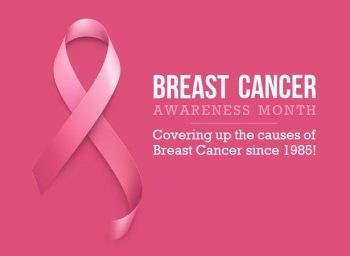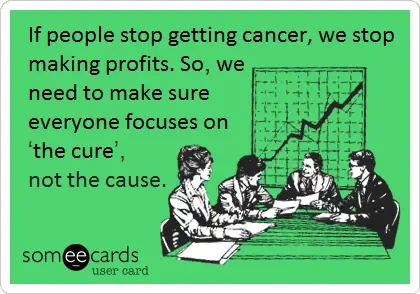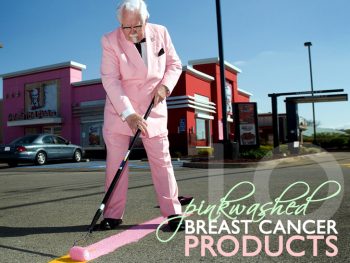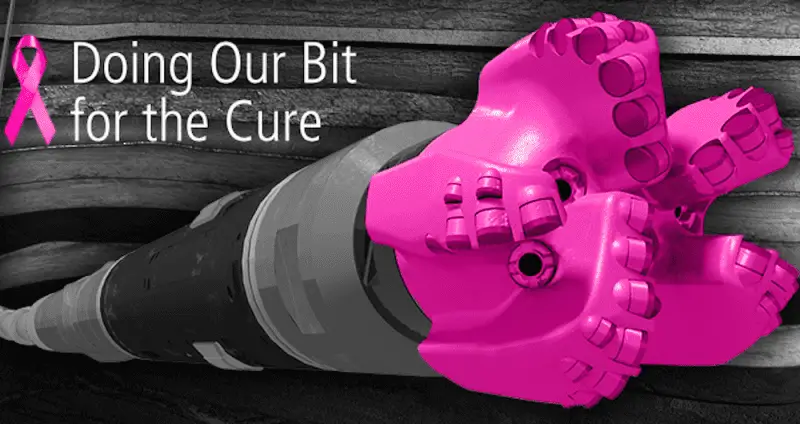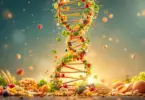October 17th, 2018
By Sayer Ji
Contributing writer for Wake Up World
Covering Up The Causes of Breast Cancer Since 1985: AstraZeneca’s BCAM
Did you know that AstraZeneca, manufacturer of two blockbuster breast cancer drugs (one of which is classified as a known human carcinogen), is behind Breast Cancer Awareness Month?
Why is it, do you think, that during Breast Cancer Awareness Month (BCAM) you never hear the word “carcinogen” mentioned, but are barraged a million times over by the word “cure”?
Truth be told, BCAM should be renamed Breast Cancer Un-Awareness Month, as it has nothing to do with generating awareness about the true causes and solutions for the breast cancer epidemic and everything to do with making the public focus on a presumably not-yet-existent “cure” to be produced through the pharmaceutical pipeline somewhere off in the future, only after enough money is raised.
[pro_ad_display_adzone id=”110028″]
Instead of identifying and addressing the known causes of cancer, like the many mammary carcinogens now identified in body care products, GMO and processed foods, and our polluted environment, the mission of BCAM is to make people think that the best way to prevent breast cancer is to “detect it early.”
And how?
By subjecting their breasts to radiation-based diagnostic screening that we now know actually causes breast cancer, and which has lead to over one million cases of falsely diagnosed and unnecessarily treated breast cancers in the past 30 years in U.S. women alone. One recent review on the topic of mammography concluded that they are harmful and should be avoided, and yet you will hear countless messages this month that breast screenings are safe and effective for reducing breast cancer mortality — technically, a lie.
This viral meme describes the underlying agenda succinctly:
Back in 2012, when I first wrote “The Dark Side of Breast Cancer [Un]Awareness Month,” in order to shed light on this travesty, the real history of Breast Cancer Awareness Month’s origins was still relatively unknown despite the fact that it was a matter of public record. According to the Wikipedia page on the topic:
“NBCAM was founded in 1985 as a partnership between the American Cancer Society and the pharmaceutical division of Imperial Chemical Industries (now part of AstraZeneca, maker of several anti-breast cancer drugs). The aim of the NBCAM from the start has been to promote mammography as the most effective weapon in the fight against breast cancer.”
The reference link listed on Wikipedia for the paragraph above comes from the BCAM website, but is now dead. For reasons that remain a mystery, the BCAM website was taken offline by AstraZeneca in the intervening years. Despite this, the BCAM domain name — www.nbcam.org — still links directly to AtraZeneca’s HealthCare Foundation page; astounding evidence that AstraZeneca owned and controlled BCAM and still does. You can still view the WayBackMachine’s archived NBCAM website here if you are curious.
Why is this connection so important?
What is so disturbing about AstraZeneca’s founding role in BCAM is that it “just happens” to make two blockbuster breast cancer drugs, Tamoxifen and Arimidex — a conflict of interest so flagrant, it’s hard to ignore. Even more disturbing is that Tamoxifen is actually classified by the International Agency for Research on Cancer as a known human carcinogen! A carcinogenic “treatment” for breast cancer? No wonder BCAM won’t allow the word “carcinogen” mentioned in any of its campaigns.
Back when AstraZeneca kept the BCAM website functioning, it was easy to prove how BCAM and AstraZeneca had pinkwashed the concept of the true causes of cancer (carcinogens) from the public mind. You used to be able to plop the word “carcinogen” into the site’s search engine feature and you would retrieve the following highly suspect results:
Your search – carcinogen – did not match any documents. No pages were found containing “carcinogen”.
Likewise, back in 2012, on Susan G. Komen’s website, the term “carcinogen” only emerged twice, and both in the context of denying the likelihood of there being a connection between smoking and breast cancer.
Clearly this is strategic. There are literally thousands of possible and known carcinogens identified in various public databases, such as Toxnet. Roundup herbicide, for instance, was recently reclassified as a probable carcinogen by the World Health Organization. If the goal is really to protect women and reduce breast cancer morbidity and mortality, shouldn’t Breast Cancer Awareness Month focus on identifying and reducing exposure to probable and/or known carcinogens? Failing to do so is equivalent to deceit, if not malfeasance, is it not?
This all makes greater sense when you understand the history behind BCAM’s founder AstraZeneca. AstraZeneca was formed through the merger of Astra AB and Zeneca Group (a pharmaceutical subsidiary of Imperial Chemical Industries) in 1999. Imperial Chemical Industries, a multinational corporation responsible for producing breast cancer causing petrochemical derivatives such as vinyl chloride and pesticides, founded National Breast Cancer Awareness Month in 1985, in partnership with the American Cancer Society, in order to promote the widespread adoption of x-ray mammography, whose failings if not horrors we have documented extensively elsewhere.
This means the very corporation that contributed significantly to accelerating the breast cancer epidemic also profited and still profits from new diagnoses of breast cancer and their treatment.
Sadly, Breast Cancer Awareness Month is a time of increasing awareness not of the preventable causes of breast cancer, but of the breast cancer industry’s insatiable need to both raise money for research into a would-be “pharmaceutical cure,” and to promote its primary means of “prevention”: early detection via x-ray mammography. It’s also a cause-marketing feeding frenzy with a disturbingly vast array of carcinogen-containing products sporting Susan G. Komen’s pink ribbon, presumably “in support” of raising awareness, including the hot pink fracking drill bit pictured above!
Please, before you consider going on a march, donating to the “cause,” or buying a pink-ribbon-bedecked product this month, consider the true origins of the year’s most widespread brainwashing event.
Recommended articles by Sayer Ji:
- The Powerful Aspirin Alternative Your Doctor Never Told You About
- 13 Evidence-Based Medicinal Properties of Coconut Oil
- Group Drumming Better Than Prozac, Study Suggests
- 25 Cancer Stem-Cell Killing Foods That Are Smarter Than Chemo and Radiation
- How Pomegranate Puts Chemo and Radiation to Shame
- How Turmeric Can Save the Aging Brain From Dementia and Premature Death
- Dramatic Recovery in Parkinson’s Patient with Gluten Free Diet
- 6 Bodily Tissues That Can Be Regenerated Through Nutrition
- Fluoride Literally Turns the Pineal Gland to Stone, Research Suggests
- Why All Diabetics Should Know About Turmeric
- Wheat Contains Not One But 23K Potentially Harmful Proteins
About the author:
Sayer Ji is the founder of Greenmedinfo.com, a reviewer at the International Journal of Human Nutrition and Functional Medicine, Co-founder and CEO of Systome Biomed, Vice Chairman of the Board of the National Health Federation, and Steering Committee Member of the Global Non-GMO Foundation.
For more, visit GreenMedInfo.com and Facebook.com/GreenMedInfo, or sign up for GreenMedInfo’s free e-Newsletter.
© October 2nd, 2018 GreenMedInfo LLC. This work is reproduced and distributed with the permission of GreenMedInfo LLC. Want to learn more from GreenMedInfo? Sign up for their newsletter here.
[pro_ad_display_adzone id=”110027″]

